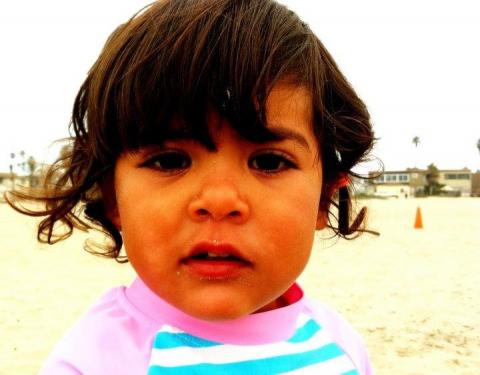Many things have changed over the past 10,000 plus years . . . and thank you in advance for recognizing the understatement of the year.

We have survived and thrived on this planet, despite the many natural and man-made factors that challenge not only our quality of life but our very existence as well. To narrow it down just a bit, we know that airborne evils, e.g. pollen, pollution, dust (to name a few) can and do affect our breathing both as adults and as children.
Said factors can seriously and negatively impact sleep patterns, breathing efficiency and growth. Development then becomes a matter of adaptation, rather than genetic design. Certainly some of these efforts to deny negative influence are already a matter of too little, too late. Our ancestral gene pool has already been altered genetically by various environmental “bugs” and our ancestors have already passed the adaptations down the line.
This was certainly apparent in the case of my adopted daughter Grace. She inherited her biological father’s severely crowded teeth -- as you can see from her Digital Model (taken 2 months after her 3rd birthday).
Records taken by Dr. Steve Olmos
What’s more, what we breathe is only part of our environment. Chemicals we use to clean, foods we eat, areas in which we live -- all exert a major determinant influence in airway development.
We lived in Ocean Beach, California -- a funky beach community in San Diego. Our girls shared a room in our small 1000 square foot Craftsman cottage (circa 1920). We had two English Bulldogs, the perfect dog for someone in the dental industry taking a close look at airway and orthodontics -- Skeletal Class III (underbite) and snoring like you cannot believe. I often remarked that snoring was our “white noise,” which made sharing a room with some of my colleagues on corporate field-trips a non-issue. (You know who you are.)
Grace was bottle fed formula for the first five months. My wife was still pregnant, and because of our history, she was considered high risk and advised not to breast-feed Grace. Amazingly enough, at five months Grace did latch on and did breast-feed regularly -- in addition to feeding from the bottle.
My point? Other than the fact of Grace being formula-fed for 5 months, both our girls lived in the exact same environments.
Thus was I able to rule out issues based on surroundings.
So, to those of you who have been following this series from the first entry...where are we in all of this?
Grace clearly had a genetic disposition for airway issues...and as you can see from the digital model photo above and these photos below (Thank you, Dr. Steven Olmos), she had no primate spacing, a deep bite and a narrow upper arch. All these factors work against her growing and developing according to natural design. In addition, she is missing two primary lower anterior teeth, but has all four permanent lower anteriors.



And now let’s talk socio-economics. Think about how often you wash your sheets, blankets, comforter (or if you’re fancy like my wife says I am, duvet covers). Depending upon washing frequency, children and adults are potentially exposed to vast amounts of dust, dirt, pollen, dead skin and even dust mites -- all of which can easily cause problems for those susceptible to airway related problems. Those fortunate (economically or otherwise) enough to be able to eliminate prolonged exposure to these allergens would indeed prove less susceptible than those who are not.
That being said, Grace’s records will provoke some interesting conclusions in this area, but that is for another blog. Perhaps the next one...





